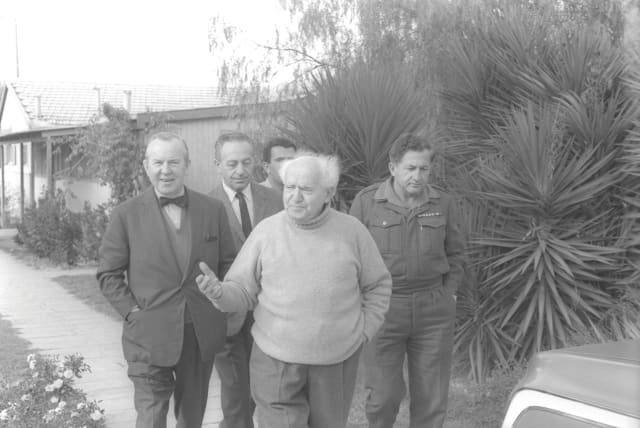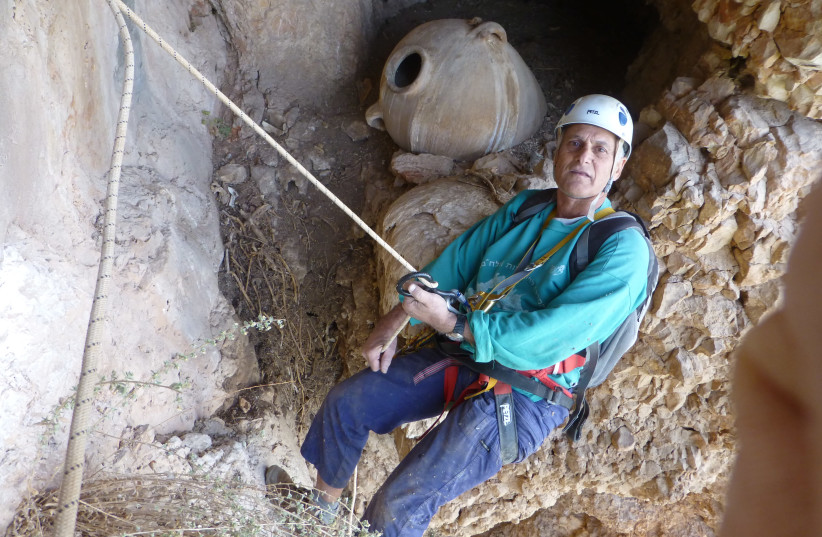The debt to the Jewish rebels against Rome - opinion

Brushing aside negative portrayals of the ancient rebels, the Zionists made an ideological connection to them because they had bequeathed an important legacy.
"For the freedom of Jerusalem.”
The Jewish rebels against the Roman Empire have gotten terrible press for the last 1,900 years. Yet they fought for an independent Hebrew-speaking state of Israel, under a secular ruler, inspiring the Zionist founders of modern times.
The historical texts are negative. The Romans and their apologists, in particular Josephus Flavius, described the rebels as bandits and fanatics.
The later rabbinic sages (who may have read Josephus) downplayed the revolts, even though some of their most beloved predecessors had joined them. They describe the First Revolt as a cautionary tale of hubris followed by death and destruction, ultimately the result of baseless hatred of Jews towards their brethren. The leader of the Second Revolt is depicted as a false messiah.
Finally, the early Christian fathers of the Church, writing hundreds of years after the revolts, fit them into a narrative of the Lord’s plan to eternally punish the Jews.
When Jews revived a movement for political independence over a hundred years ago, and looked back to these two last expressions of sovereignty, they had little textual support for a positive political legacy. So they improvised. In 1910, the future first prime minister of Israel, David Green, adopted the family name of a First Revolt commander, Ben-Gurion.
The early Zionists were able to visit the site of the rebels’ last stand in the First Revolt, the fortress of Masada in the Judean desert. They were inspired, in a contrarian sort of way, by its graphic end as described in Josephus. “Never shall Masada fall again!” vowed Yitzhak Lamdan in his 1926 epic poem in Hebrew.
Brushing aside negative portrayals of the ancient rebels, the Zionists made an ideological connection to them because they had bequeathed an important legacy. During their brief independence (five years in the First Revolt and three in the Second Revolt), the rebels revived and repurposed key political concepts from the earlier periods of Jewish sovereignty, reinforcing these concepts and keeping their memory alive for a people about to enter a long period of forced exile.
Among these concepts, all recorded on the rebel coins, are the name of the sovereign Jewish state (Israel), the title of a secular political leader (“nasi”), the use of the Hebrew language to the exclusion of other languages, and even the goal of political independence (herut, freedom).
After the Romans quashed the revolts, Jews kept the coins. Finds occasionally surface in places like old Cairo. Maimonides and Nahmanides wrote about these “Shekels of Israel,” the Renaissance rabbi Azariah dei Rossi studied them. Their ideas entered the Jewish cultural bloodstream, aided by a medieval Hebrew paraphrase of Josephus’s work, called Sefer Josippon, which emphasized national resistance.
Ancient tweets rediscovered
The Jewish rebels struck coins in silver and bronze, both to replace the Roman coins in circulation and to spread political messages. The inscriptions “Shekel of Israel,” “Jerusalem the Holy,” “Shimon the Prince,” ”Year 2 of the Independence of Israel,” “Year 4 of the Redemption of Zion” are the equivalent of ancient tweets, real-time slogans from the revolts.
These ancient tweets are virtually the only surviving writing from the rebels.
Anyone who has been to Israel has seen the pictorial symbols on these revolt coins – national symbols like a palm tree and citron fruit or lulav and etrog, reminders of the Temple like its musical instruments and the high priest’s staff. The modern State of Israel adopted them for today’s coins.
The coins were minted by a central authority (probably the Temple staff in the First Revolt and Shimon ben Kosiba’s headquarters in the Second Revolt) who kept the quality control and die engraving at a high level throughout the revolts. These were organized governments that devised “hearts and minds” information campaigns using the best mass media of the time – coins.
The legends on the coins are inscribed in a script, Paleo-Hebrew, that was no longer in daily use at the time of the revolts. Using this antique script was part of the information campaign to identify the revolts with earlier periods of Jewish sovereignty. Even if only scribes could read them, the coins bear compact powerful messages that could be orally transmitted.
Let’s look at the first two messages from these ancient tweets.
The rebels lived in a linguistically diverse part of the Roman Empire where Aramaic and Greek predominated. But they insisted on Hebrew as the language of their state. Their coin inscriptions are only in Hebrew.
Use of Hebrew was an expression of national independence. Local coins minted by the Romans in Judea and by the city governments (including Jewish cities like Sepphoris (Tzipori)) were all in Greek. So were the coins minted by Herod and his successors. Even the coins minted by the Maccabees were usually Greek on one side and Hebrew on the other.
The rebels’ use of Hebrew for matters of state was not limited to coin inscriptions. In 1960, Israeli archaeologist Yigael Yadin led a team that discovered bundles of papyrus documents hidden in a cave high on the side of a cliff overlooking a wadi in the Judean desert. Among the documents were letters from the commander of the Second Revolt, Shimon ben Kosiba, to regional leaders in the nearby oasis town of Ein Gedi, apparently later stored by them in this cave. Many of the letters were written in colloquial Hebrew.
Israel as name of the state
The coins from both revolts proclaim the name of the newly independent Jewish state – Israel. But at the time of the revolts, there had been no political entity of this name for over 600 years. The Roman entity and the Persian province before it were named Judea. Herod had been king of Judea as had the latter Maccabean rulers. The appellation “Jew” itself derives from Judean. So what was Israel?
Israel was a reference to the kingdom of David and Solomon. It’s a name with religious meaning, having been bestowed by an angel on the patriarch Jacob. Most important, it was a name that covered the entire people, including those living outside the province of Judea.
By invoking Israel in their information campaign, the rebels sought to turn a local rebellion in one Roman province into an international war by recruiting all of the Jews, especially those in the Parthian Empire, Rome’s chief enemy. Perhaps they realized that this was the only way to secure independence.
Josephus states that internationalizing the conflict with Rome was a rebel war aim, and rebel actions bear this out. Early in the First Revolt, after defeating the first Roman army sent to quell unrest, the rebels convened a war council to assign regional commands. It’s an international cast.
There is Niger from east of the Jordan, Silas the Babylonian, Monobazus and Cenedaeus, who are relatives of the Jewish king of Adiabene (a client state of the Parthian Empire in present-day Iraqi Kurdistan), Galilean and Idumean Jews, Egyptian and Libyan ones, even an Essene. Prominent in this diverse high command is Shimon bar Giora (Aramaic for son of a convert) from the Greek city of Gerasa (modern Jerash in Jordan).
Most telling is the warning to the rebels that Josephus puts in the mouth of the Roman client King Agrippa II, great-grandson of Herod. “So what allies will you find to support you in this war? Some of you spread your hopes beyond the Euphrates and imagine that your compatriots in Adiabene will come to your aid. But they will not involve themselves in such a serious war for no good reason.”
Josephus, writing years after the revolt, has Agrippa accurately predict that the Jews in Parthia will send only token military support for the revolt. He probably made the speech up, in conscious imitation of the rhetorical style of Greek historian Thucydides, but he knew the war aims of the rebels. Present in Jerusalem when the war broke out, Josephus knew the intent was to recruit the Jews in the Diaspora to join their brethren in Judea.
Thus Israel was the smart, inclusive name for the independent Jewish state in 66 CE, just as it was in 1948 CE.
Part Two will cover the remaining political legacy of the Jewish rebels.
The writer, a former US diplomat, is a lecturer at Shalem College and managing editor of The Jerusalem Strategic Tribune.
Jerusalem Post Store
`; document.getElementById("linkPremium").innerHTML = cont; var divWithLink = document.getElementById("premium-link"); if (divWithLink !== null && divWithLink !== 'undefined') { divWithLink.style.border = "solid 1px #cb0f3e"; divWithLink.style.textAlign = "center"; divWithLink.style.marginBottom = "15px"; divWithLink.style.marginTop = "15px"; divWithLink.style.width = "100%"; divWithLink.style.backgroundColor = "#122952"; divWithLink.style.color = "#ffffff"; divWithLink.style.lineHeight = "1.5"; } } (function (v, i) { });

